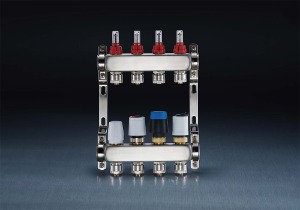2025-09-26
Stainless steel manifolds are essential components in many industrial and mechanical systems, including HVAC systems, fluid distribution networks, and hydraulic machinery. They serve as central hubs that direct and regulate the flow of liquids or gases to various branches, ensuring efficiency and stability.

Importance of Stainless Steel Manifolds
Stainless steel manifolds are important because they combine durability, corrosion resistance, and precision in fluid management. Their use ensures reliable distribution of fluids or gases under varying pressure and temperature conditions. Stainless steel, known for its resistance to rust, chemical reactions, and environments, makes these manifolds suitable for industrial, medical, and commercial applications. Proper manifold selection ensures system reliability, reduces maintenance, and enhances safety in operational environments.
Key Characteristics of Stainless Steel Manifolds
Several characteristics define stainless steel manifolds and their suitability for various applications:
1. Material Quality
Stainless steel manifolds are typically made from grades such as 304 or 316 stainless steel. Grade 304 is widely used for general applications due to its strength, corrosion resistance, and cost-effectiveness. Grade 316 offers enhanced resistance to harsh chemicals, salts, and high temperatures, making it suitable for marine, pharmaceutical, or chemical processing environments. The choice of material affects the manifold’s longevity, resistance to corrosion, and operational reliability.
2. Configuration and Port Design
Manifolds vary in the number of ports and their arrangement. Common configurations include single-inlet multi-outlet manifolds, dual-inlet manifolds, and custom-designed manifolds for specialized systems. The number and size of ports determine flow capacity, system flexibility, and compatibility with piping or tubing systems. Proper port design ensures uniform distribution of fluids or gases to all connected lines.
3. Flow and Pressure Ratings
Flow capacity and pressure rating are essential performance characteristics. Stainless steel manifolds are designed to handle different flow rates and operating pressures, depending on system requirements. High-quality manifolds ensure consistent flow, minimal pressure drop, and uniform distribution across all outlets. Flow and pressure specifications should match the intended application to ensure system efficiency and longevity.
4. Connections and Fittings
Stainless steel manifolds often feature threaded, flanged, or welded connections to interface with pipes or tubing. The type of connection affects installation, maintenance, and leak prevention. Threaded connections allow flexibility and easy replacement, flanged connections provide stability for high-pressure systems, and welded connections ensure permanent and secure attachment.
5. Surface Finish and Cleanliness
The surface finish of stainless steel manifolds affects both performance and aesthetics. Polished or electropolished surfaces minimize fluid resistance, prevent particle buildup, and improve hygiene in food, beverage, or pharmaceutical applications. Smooth surfaces also reduce the risk of corrosion and facilitate cleaning.
6. Durability and Maintenance
Stainless steel manifolds are valued for their long service life and low maintenance needs. Regular inspections, cleaning, and proper installation can maximize durability. Resistant to corrosion, chemical exposure, and temperature fluctuations, these manifolds remain reliable even in demanding industrial environments.
Types of Stainless Steel Manifolds
Stainless steel manifolds can be categorized based on design, application, and connection type:
Hydraulic Manifolds: Used in hydraulic systems to control fluid flow and pressure. These manifolds direct fluid between pumps, valves, and actuators for efficient operation.
Pneumatic Manifolds: Designed for air or gas distribution, often used in automated machinery, manufacturing lines, and laboratory systems.
Plumbing or HVAC Manifolds: Facilitate distribution of water or other fluids in heating, cooling, or plumbing systems.
Custom Manifolds: Engineered for specific industrial applications, including chemical processing, food and beverage systems, and laboratory setups.
Comparisons of Stainless Steel Manifold Types
When comparing different types of stainless steel manifolds, several factors are important:
Material Grade: 304 is suitable for general use, while 316 excels in chemical or marine environments.
Number of Ports: Single-inlet multi-outlet manifolds support multiple branches, while dual-inlet designs allow increased flow control.
Flow and Pressure Capacity: Hydraulic manifolds typically handle higher pressures, while plumbing manifolds focus on moderate flow rates.
Connection Type: Threaded connections provide flexibility, flanged connections offer stability, and welded connections ensure durability.
Application Environment: Food and pharmaceutical applications require polished, hygienic surfaces, while industrial systems may prioritize pressure handling.
How to Choose a Stainless Steel Manifold
Choosing the right stainless steel manifold involves considering system requirements, material compatibility, and installation needs:
Determine Flow and Pressure Needs: Match manifold capacity to the system’s operating conditions.
Select Material Grade: Choose 304 for general applications and 316 for chemical, marine, or high-temperature environments.
Evaluate Port Configuration: Ensure the number and arrangement of ports meet the distribution requirements.
Consider Connection Type: Choose threaded, flanged, or welded connections based on installation preferences and system stability.
Assess Surface Finish: For hygienic or high-purity applications, opt for polished or electropolished surfaces.